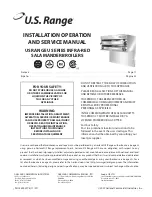
13
Matrix Installation and Operation Instructions
4.0 CONDENSATE DRAIN
This unit produces water as a product of combustion. Much of this water condenses on the heat exchanger and in the venting
system. All exhaust piping must be on a slope back to the boiler ¼” per linear foot of vent. Steps must be taken to ensure that
condensate does not collect in the venting system. Condensate must be drained from the boiler into a household drain.
Note: check with your municipality, or local gas company to determine if disposal
of combustion condensate is permitted. In the State of Massachusetts the
condensate must be neutralized prior to entering a drain.
The following are important notes that must be taken into consideration when
constructing the condensate system:
o
DO NOT run condensate line outside. A frozen or blocked drain will cause the
condensate to fill the combustion chamber. This will result in a no heat
condition, as the unit will shut down, and damage to the flame sensor, and
components can occur.
o
NEVER use copper, steel, or galvanized piping in the construction of the
condensate system (condensate is very corrosive and will wrought most
metals).
o
When a condensate pump is used or required, select a pump that is designed
for residential furnaces.
WARNING
FAILURE TO PROPERLY CONNECT THE CONDENSATE LINE WILL CAUSE COMBUSTION GASES TO
ENTER THE ROOM, POSSIBLY CAUSING SERIOUS INJURY TO OCCUPANTS OR DEATH.
Figure 4.1 Condensate Drain Plumbing
Condensate
Drain From
Boiler
Drain must be
open to allow
overflow if
blocked
Drain must
include trap
Nipple must
be cut.














































